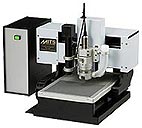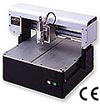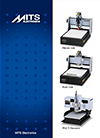High Frequency Milling bit
In high-frequency field, the pattern figure has to be 90
degree of rising edge, you need to use
the stub-shaped milling bit.The front edge of milling bit
smaller than 100µm is as thin as human
hair, the know-how of processing differrent from the V-shaped
milling bit is required.
For the 100-micron milling
In high-frequency circuit board, it is indispensable to
process the PCB with plus or minus 5%
precision in 100µm milling, such as Coplanar waveguide.
So as to achieve that resolution, the processing method
considering the tolerance of the milling
bit and the runout of the spindle are abosolutely neccessary.
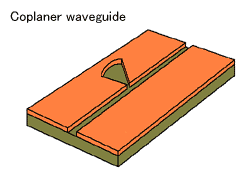 |
Tool Tolerance
Milling bit supplied by parts manufacturer inevitably
come with some tolerance.
You need to process PCB with putting that tolerance
into consideration.
Runout of HF Spindle
The spindle motor in prototyping machine also inevitably
come with some runout.
The runout changes along with the motor rotating
speed, and slightly changes with the extent
of fastening the motor to the collet. These minute
change emerges as the unexpected broad
milling track wider than the milling bit in finer
processing than 100µm.
|
| Examples: |
When tool tolelance is +/- 5µm,
and
When runout of the spindle is 10µm. |
|
The minimum processible milling width is 105µm, and
that of maximum is 115µm.
Therefore, in order to achieve the 100µm processing,
we perform the following procedure;
|
1;
|
Use the milling bit from 80 to 90µm
considering the tolerance of the milling bit and the
runout of the spindle motor. |
|
2;
|
Use the milling bit thinner than 80µm
and mill the PCB twice to achieve the 100µm milling
width. |
The spindle
standstill
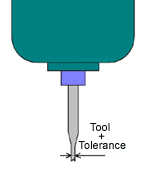 |
The spindle
in motion
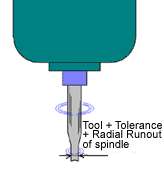 |
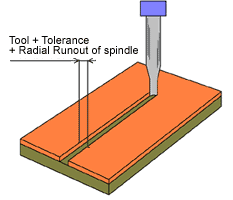 |
|
|
|
For the fine and precise milling
track
Stepping Milling Method
As the milling line gets thinner, processing condition becomes
ever more crucial.
When the radius of milling bit becomes lower than 100µm,
the milling bits become very
fragile, leading to increase burrs.
Therefore, in processing the milling bit thinner than 100µm,
we employ the "stepping method"
that process the PCB gradually, which is suitable for the
small radial milling bit.
In using the copper foil of 18µm thickness, we mill
the board graually by several steps .
(The depth of single milling is 5µm) With this method,
you can process the PCB without
burrs or breakage even if you use the small radial milling
bit.
